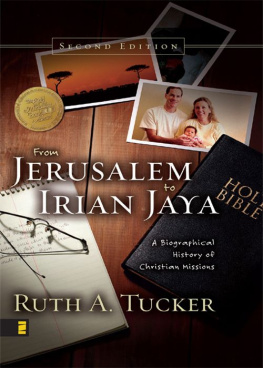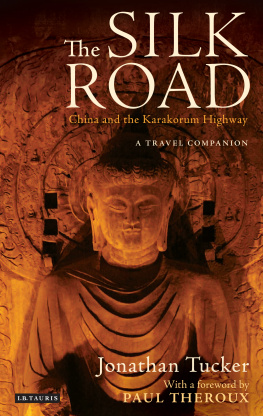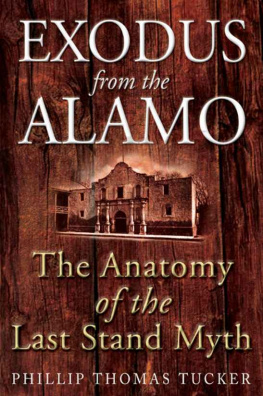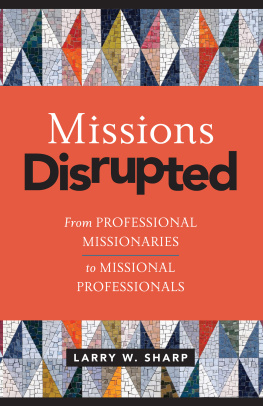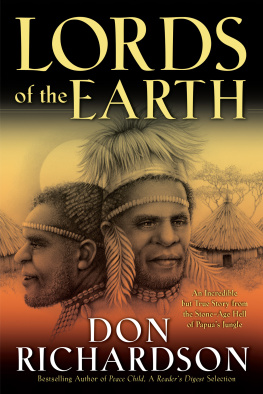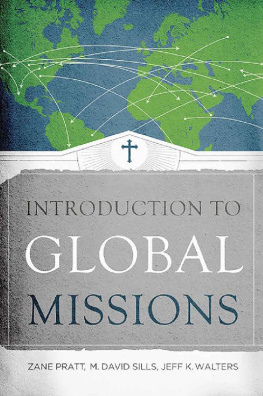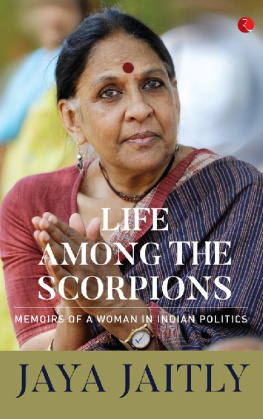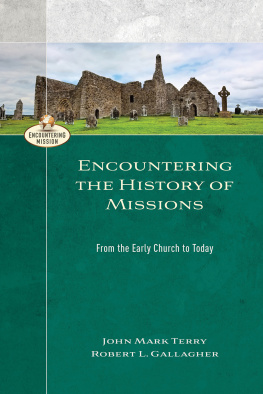OTHER BOOKS BY RUTH A. TUCKER
Daughters of the Church: A History of Women and Ministry from New Testament
Times to the Present, with Walter Liefeld
Private Lives of PastorsWives
Guardians of the Great Commission:The Story of Women in Modern Missions
Christian Speakers Treasury
Another Gospel: Alternative Religions and the New Age Movement
Stories of Faith: Inspirational Episodes from the Lives of Christians
Women in the Maze: Questions and Answers on Biblical Equality
Multiple Choices: Making Wise Decisions
Family Album: Portraits of Family Life through the Centuries
Seasons of Motherhood
Not Ashamed:The Story of Jews for Jesus
Walking Away from Faith: Unraveling the Mystery of Belief and Unbelief

ZONDERVAN
From Jerusalem to Irian Jaya
Copyright 1983, 2004 by Ruth A. Tucker
All rights reserved under International and Pan-American Copyright Conventions. By payment of the required fees, you have been granted the non-exclusive, non-transferable right to access and read the text of this e-book on-screen. No part of this text may be reproduced, transmitted, downloaded, decompiled, reverse engineered, or stored in or introduced into any information storage and retrieval system, in any form or by any means, whether electronic or mechanical, now known or hereinafter invented, without the express written permission of Zondervan.
ePub Edition June 2009 ISBN: 978-0-310-83062-7
Requests for information should be addressed to:
Zondervan, Grand Rapids, Michigan 49530
Library of Congress Cataloging-in-Publication Data
Tucker, Ruth, 1945
From Jerusalem to Irian Jaya : a biographical history of Christian missions / Ruth A. Tucker.2nd ed.
p. cm.
Includes bibliographical references.
ISBN 0-310-23937-0
1. MissionariesBiography. 2. MissionsHistory. I. Title.
BV3700.T83 2004
266.00922dc22 2003027902
All rights reserved. No part of this publication may be reproduced, stored in a retrieval system, or transmitted in any form or by any meanselectronic, mechanical, photocopy, recording, or any otherexcept for brief quotations in printed reviews, without the prior permission of the publisher.
Interior design by Sharon VanLoozenoord
To
my cousin
Valerie Stellrecht
for
many years
of faithful missionary service
in Quito, Ecuador
CONTENTS
PICTURESAND CREDITS
MAPS
CHARTS
M ore than two decades have passed since the first edition of this volume was published. I was then new in the field of mission studies. Three years earlier, when I was assigned to teach a course on the history of missions, a colleague commented, Its an important course, but its too bad the subject matter is so boring. He was right. The texts then available on the worldwide scope of Christian missions were encyclopedicfilled with names and dates and statistics and offering a vast array of factual details about mission organizations and geographical locations. I needed a text that would engage my students. My own teaching style gravitated to content fueled by thorny issues and brutally honest biography.
In my course preparation I quickly discovered that the most interesting debates and controversies in church history have related to mission outreach and evangelism. An added bonus was the lively cast of characters. I have often wondered as I have studied missions history if there is any other field of endeavor that has been peopled by such a crazy lot. Many of them were, it seems to me, more eccentric and risky and individualistic and driven than other segments of the population. Often self-sacrificing to the extreme, many were also pedantic and critical and mean-spiritedunable to live in harmony with colleagues or with those to whom they sought to minister.
When I think of missionaries of past generations I am reminded of Sonny, the lead character in Robert Duvalls film The Apostle , and of Michael Yaconellis book Messy Spirituality . Sonny was a preacher and evangelist whose commitment to ministry was unrivaled. But he had feet of clay. His sins were as big as was his heart. He was driven. Nothing could hold him backnot even the messy spirituality that shaped his entire persona. In the end, the law caught up with him, and the last scene, as the credits are rolling, shows Sonny on a chain gangstill preaching the gospel.
The fascinating story of Sonny and messy spirituality has been played out time and again in the mission settingoften with critical issues swirling in the midst of cultural misunderstanding. Here theology is raw and basic. Who is Godin light of other religions? What is the fate of those who have never heard the gospel? Is the message one of contextualization or transformation? Where does competition end and ecumenical harmony begin? The issues that troubled missionaries of the past continue to trouble us todaynot just on the mission field but at home.
But where is home? Two decades ago there was a greater distinction between home and foreign . Today such distinctions are set aside as missionaries crisscross the globe. This new edition reflects this phenomenon of globalization, and it more fully represents missionaries from the whole community of the Christian faithfrom Catholics to Pentecostals. Material has been updated where appropriate and new information has been addedall in a humble effort to tell an incredibly good story.
H ow does one write a history of Christian missionsa history that entails tens of thousands of noteworthy professionals sent out by hundreds of mission societies to every country in the world over a period of some two thousand years? It is an enormous subject that has unfortunately been almost destroyed by historians who have attempted to squeeze too many dates, events, organizations, and names into one volume. But the history of missions is not a compilation of arid facts. It is a fascinating story of human struggles and emotions, intertwined with tragedy, adventure, romance, intrigue, and sorrow.
It was only through the tireless efforts of its missionaries that Christianity became the worlds largest religion, a factor that has changed the face of the globe. World Christianity, writes Lesslie Newbigin, is the result of the great missionary expansion of the last two centuries. That expansion, whatever ones attitude to Christianity may be, is one of the most remarkable facts of human history. One of the oddities of current affairs is the way in which the event is so constantly ignored or undervalued.
But if the remarkable expansion of Christianity has been ignored and undervalued, so have the men and women who have been responsible for its expansion. They were single-minded people, wholly equal to the task they accomplished, driven by a sense of urgency that is rarely seen even within the most patriotic and militant of causes. The early missionaries were born warriors and very great men, wrote Pearl Buck (who could hardly be termed a missionary enthusiast). No weak or timid soul could sail the seas to foreign lands and defy death and danger unless he did carry religion as his banner, under which even death itself would be a glorious end. To go forth, to cry out, to warn, to save othersthese were frightful urgencies upon the soul already saved. There was a very madness of necessityan agony of salvation.
Who were these missionaries who sacrificed so much to carry the gospel to the ends of the earth? Were they spiritual giants who gloriously overcame the obstacles they confronted? No. They were ordinary individuals, plagued by human frailties and failures. Supersaints they were not. Like the colorful cast of biblical characters beginning with the book of Genesis and continuing on through the New Testament, they were willing to be used by God despite their human weaknesses, and it was in that sense that they were able to make such an indelible imprint on the world.

